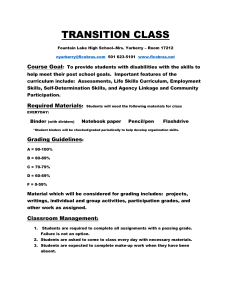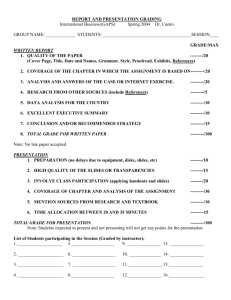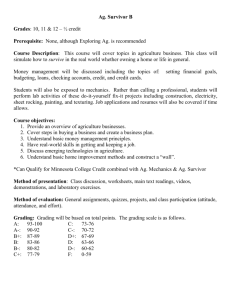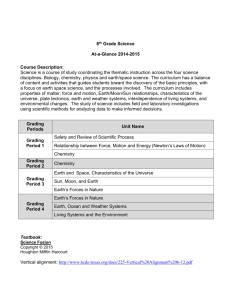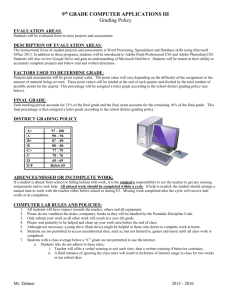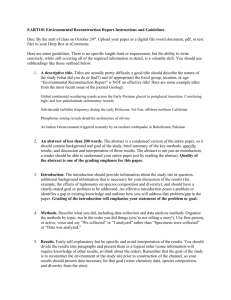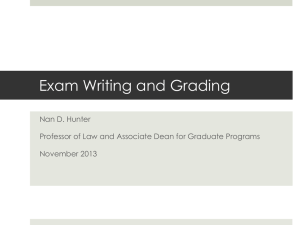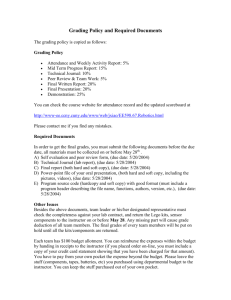Grading in Physical Education
advertisement
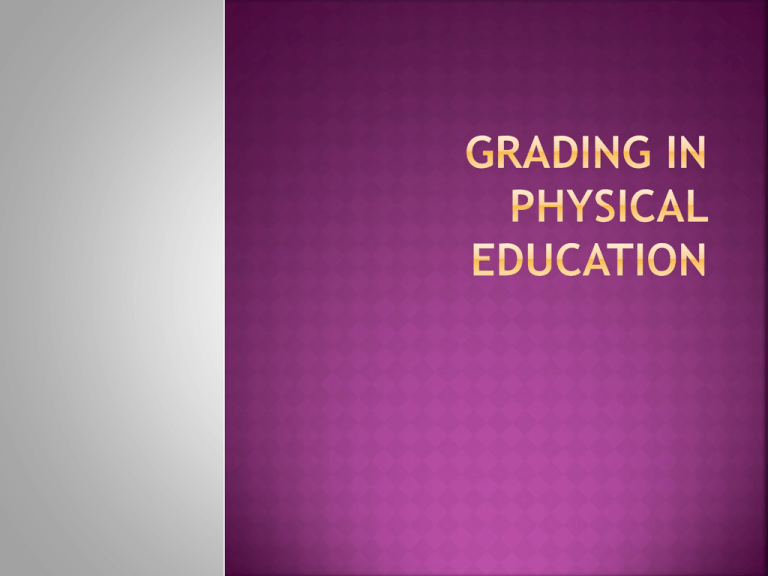
What is it? Summative process Include all learning domains Standards based Developmentally appropriate What it isn’t: A one shot deal Based on management issues such as: Lacking objectivity Embarrassing Fitness score based PE is not an academic subject Extremely PE time consuming teachers are unreliable in grading Grades can discourage children Communicates information Accountability PE should have same status as other subjects New assessment strategies improve grading Grading keeps PE in educational mainstream Objectives Process vs. Student Responsibilities vs. Product Improvement Grading vs. Achievement Emphasis of Domains What is the difference? Should student responsibilities be graded? What are some examples of student responsibilities that should not be graded? What are some examples of student objectives that should be assessed and graded? What do we mean by process? What do we mean by product? What should we grade: process or product? NASPE suggests a combination of both that is developmentally appropriate Improvement: Issues with grading on improvement: Pre and post testing Ceiling effect Achievement: Issues with grading on achievement: One shot at grading How Philosophy Standards Time spent on objectives Developmental level of students How do you establish a grading protocol? do you know if it is fair? Pilot test Does it meet the “observation test”?
